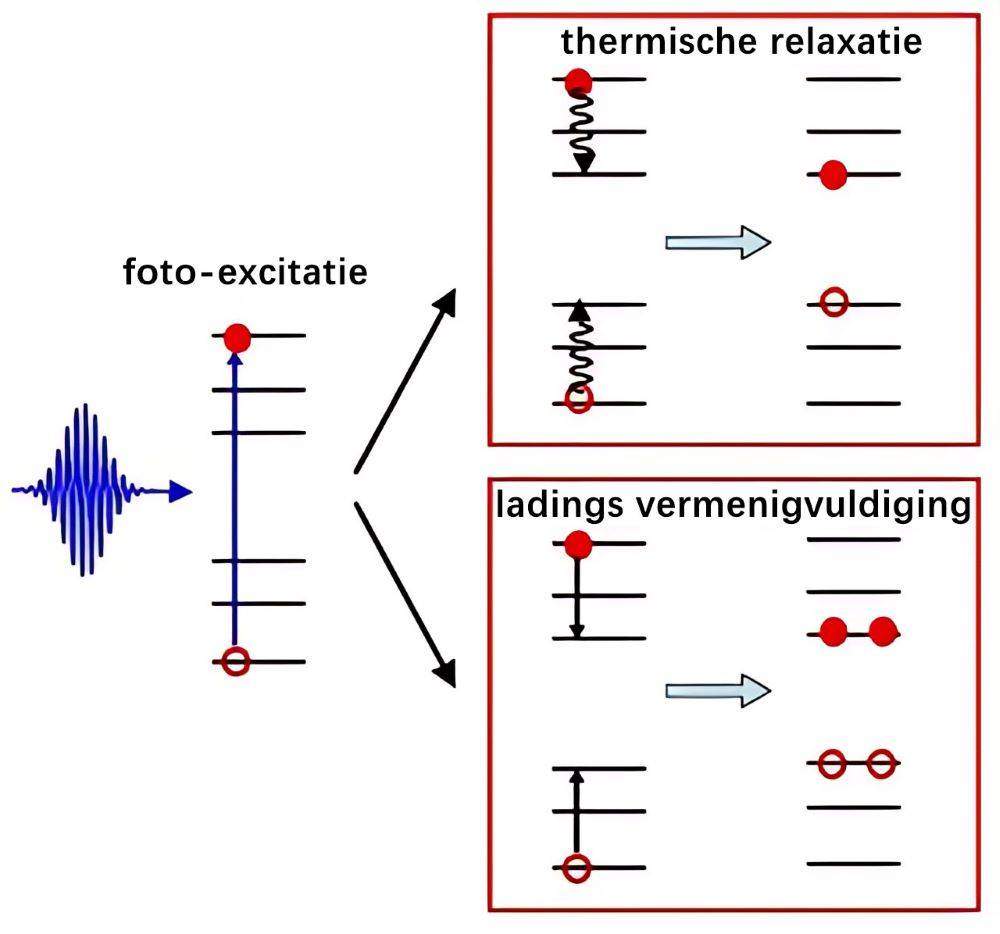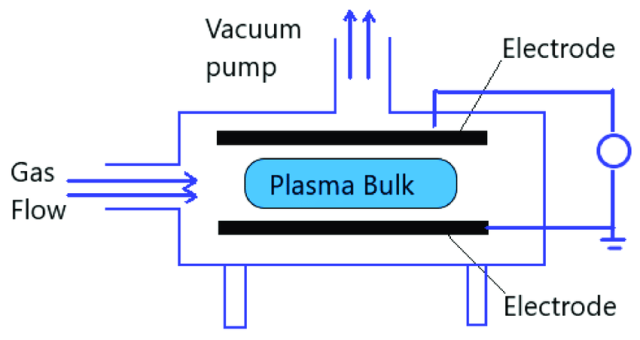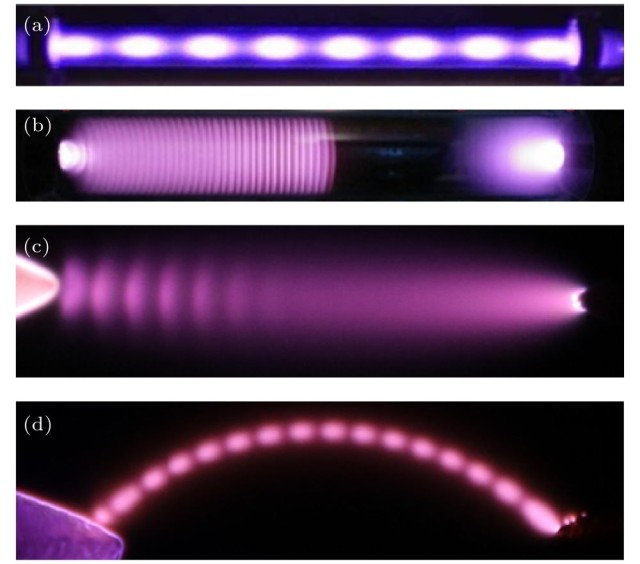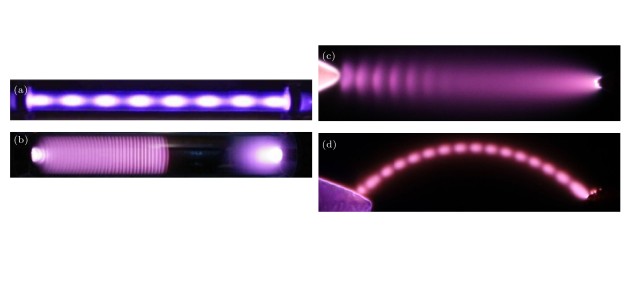Introduction to Glow Discharge
Definition and Mechanism
Glow discharge is a distinctive gas discharge phenomenon that emerges under low gas pressure, serving as a pivotal method for generating plasma within a gas. This process typically unfolds within a confined chamber filled with a specific gas, where the chamber's inner walls function as the cathode, and a centrally positioned electrode acts as the anode. The interaction between the electric field and the gas molecules within this setup initiates the discharge, leading to the formation of plasma.
In a glow discharge, the electric field accelerates electrons released from the cathode, causing them to collide with gas molecules. These collisions result in the ionization of the gas, creating a cascade of electrons and ions known as the electron avalanche effect. This effect is crucial for sustaining the discharge and maintaining the plasma state.
The plasma generated by glow discharge exhibits several distinct regions, each with its own characteristics. Notably, the positive column region, which constitutes the bulk of the discharge, features an approximately equal density of electrons and ions. In contrast, the negative glow region, situated near the cathode, is where the glow is most intense. This luminescence is a direct result of photons emitted when excited gas molecules or atoms return to lower energy states.
Overall, glow discharge is a versatile and effective method for plasma generation, with its applications extending to various fields, including the Plasma-Enhanced Chemical Vapor Deposition (PECVD) process for film deposition. The control over plasma parameters in glow discharge allows for precise modulation of the chemical composition, microstructure, and electrical properties of the deposited films, making it a valuable tool in material science and engineering.
Characteristics of Glow Discharge
Electron Avalanche Effect
During the discharge process in a PECVD system, electrons are liberated from the cathode and subsequently accelerated by the intense electric field present within the chamber. These high-energy electrons then collide with the gas molecules, initiating a chain reaction known as the electron avalanche. This process is characterized by the multiplication of electrons and ions, which significantly contributes to the formation of the plasma necessary for film deposition.
The electron avalanche begins when an electron, accelerated by the electric field, gains sufficient energy to ionize a gas molecule upon collision. This ionization event produces a new electron and a positive ion. The newly generated electron is then accelerated by the electric field, gaining enough energy to ionize another gas molecule, and the process repeats. This cascading effect results in the rapid multiplication of electrons and ions, creating a dense plasma within the discharge region.

The efficiency of the electron avalanche process is influenced by several factors, including the strength of the electric field, the type of gas used, and the pressure within the chamber. A stronger electric field accelerates electrons to higher energies more quickly, enhancing the probability of ionization events. The choice of gas affects the ionization energy required for the process; gases with lower ionization energies facilitate more efficient avalanche multiplication. Additionally, the gas pressure plays a crucial role, as it determines the mean free path of electrons between collisions, thereby influencing the likelihood of ionization events.
In summary, the electron avalanche effect is a fundamental mechanism in the glow discharge process, driving the generation of plasma and enabling the uniform deposition of films in PECVD systems. Understanding and controlling this process are essential for optimizing the properties of the deposited films, making it a critical area of study in the field of plasma-enhanced chemical vapor deposition.
Positive Column and Negative Glow Regions
In a glow discharge, the spatial distribution of plasma is characterized by distinct regions, each with unique properties. The positive column region stands out as the main body of the discharge, where the density of electrons and ions is nearly equal, creating a quasi-neutral plasma. This region is typically elongated and extends from the anode towards the cathode, maintaining a relatively uniform glow throughout its length.
In contrast, the negative glow region is situated near the cathode and exhibits the most intense luminescence. This area is marked by a high concentration of excited species, which emit photons as they de-excite, resulting in the characteristic bright glow. The negative glow is significantly denser and more luminous than the positive column, making it a focal point in the visual observation of glow discharge.
| Region | Characteristics |
|---|---|
| Positive Column | - Main body of discharge - Quasi-neutral plasma - Uniform glow |
| Negative Glow | - Near the cathode - Most intense glow - High concentration of excited species |
Understanding the roles and characteristics of these regions is crucial for optimizing the parameters in the PECVD process, such as power, gas pressure, and flow rate, to achieve desired film properties and uniformity.
Luminescence
The phenomenon of luminescence in a glow discharge is a direct result of the energy transitions within gas molecules and atoms. When these particles are energized by colliding with high-energy electrons, they are temporarily elevated to a higher energy state. As the excited particles return to their original, lower energy state, they release excess energy in the form of photons. This emission of light, or luminescence, is a key characteristic of the glow discharge process, contributing to the visible glow observed in the plasma.
To better understand the process, consider the following steps:
- Excitation: Electrons, accelerated by the electric field, collide with gas molecules or atoms, transferring energy and elevating them to a higher energy state.
- Energy Transition: The excited particles, now in a higher energy state, are unstable and quickly return to their original state.
- Photon Emission: During this return to stability, the particles release the excess energy as photons, which are visible as light.
This cycle of excitation and de-excitation is continuous within the plasma, leading to the sustained luminescence observed in glow discharge.
Plasma Generation
Glow discharge is a highly effective method for generating plasma, making it a cornerstone in various industrial applications, including PECVD (Plasma-Enhanced Chemical Vapor Deposition). The process involves the creation of a plasma beam that is propelled through a voltage shock, which spreads across electrodes. Notably, these electrodes operate under low-temperature constraints, ensuring that the power required remains modest. This low-temperature operation allows for the use of various energy sources, such as radio frequency, DC power, or mid-frequencies, to initiate the plasma generation.
Regardless of the energy source employed, the fundamental sequence of plasma generation remains consistent. Initially, the energy source activates the process, creating a mixture of neutral atoms, ions, and electrons. As the activation progresses, these particles begin to spread sporadically, expanding from a single fundamental particle into a complex plasma environment. The ratio of electrons, ions, and neutral particles within the plasma is highly dependent on the specific discharge conditions, which can be finely tuned to achieve desired plasma characteristics.

This method of plasma generation is particularly advantageous in PECVD processes due to its ability to create a uniform plasma field that can cover the substrate surface evenly. This uniformity is crucial for achieving consistent film deposition, which is essential for the production of high-quality semiconductor materials. Additionally, the low-temperature nature of glow discharge ensures that the substrate materials are not subjected to thermal damage, further enhancing the quality and reliability of the deposited films.
In summary, glow discharge offers a versatile and controllable approach to plasma generation, making it a vital tool in the PECVD process. By carefully managing the discharge conditions, researchers and engineers can optimize the plasma environment to achieve precise control over the properties of the deposited films, thereby advancing the field of semiconductor technology.
Effects of Glow Discharge in PECVD
Film Uniformity Control
Achieving uniform film deposition is a critical aspect of the PECVD process, and this is largely facilitated by the plasma generated through glow discharge. The uniformity of the plasma's coverage over the substrate surface is paramount, as it directly influences the consistency of the deposited film thickness and properties across the entire substrate.
To better understand how glow discharge contributes to film uniformity, it's essential to delve into the spatial distribution of the plasma. In the context of PECVD, the plasma is typically confined within a reaction chamber, where the substrate is placed. The glow discharge creates a plasma field that extends uniformly from the anode to the cathode, encompassing the substrate. This uniform distribution is achieved through careful control of the discharge parameters, such as gas pressure, flow rate, and applied voltage.
| Parameter | Effect on Uniformity |
|---|---|
| Gas Pressure | Higher pressure can lead to more uniform plasma distribution. |
| Gas Flow Rate | Slower flow rates can enhance uniformity by allowing more time for plasma to interact with the substrate. |
| Applied Voltage | Higher voltages can improve uniformity by increasing the plasma density. |
The uniformity of the plasma not only ensures a consistent film thickness but also affects the film's structural and chemical properties. For instance, a non-uniform plasma distribution can result in variations in the film's density, porosity, and chemical composition, which can adversely impact the film's performance in applications such as microelectronics or optics.
In summary, the plasma generated by glow discharge plays a pivotal role in controlling film uniformity. By meticulously adjusting the discharge parameters, it is possible to achieve a uniform plasma distribution that leads to high-quality, consistent film deposition, which is essential for various industrial applications.

Low Temperature Deposition
Glow Discharge has emerged as a pivotal technique in the realm of thin film deposition, particularly in the context of Plasma Enhanced Chemical Vapor Deposition (PECVD). One of its most significant advantages is the ability to facilitate film deposition at substantially lower temperatures compared to traditional methods. This capability is not merely advantageous but essential, especially when dealing with temperature-sensitive materials. By operating within the 250 to 350°C range, PECVD processes mitigate the risk of thermal damage, which is a common concern in high-temperature deposition techniques that often exceed 1000°C.
The reduction in thermal budget is crucial for maintaining the integrity and performance of the deposited films. Lower temperatures ensure that the underlying substrate and the materials being deposited are not subjected to excessive heat, thereby preserving their structural and chemical properties. This is particularly important in the fabrication of advanced electronic devices and components where thermal sensitivity is a critical factor. The ability to deposit films at lower temperatures while maintaining performance metrics comparable to those achieved at higher temperatures underscores the technological advancements enabled by glow discharge in PECVD processes.
Moreover, the lower temperature regime allows for the deposition of a broader range of materials, including those that are traditionally challenging to process due to their thermal instability. This flexibility enhances the versatility of PECVD as a deposition technique, making it suitable for a wide array of applications across various industries. The combination of reduced thermal stress and improved film quality positions glow discharge-based PECVD as a leading technology in the ongoing pursuit of efficient and high-performance thin film deposition methods.
Optimization of Film Properties
The optimization of film properties in the PECVD process is significantly influenced by the precise control of glow discharge parameters. These parameters, including power, gas pressure, and gas flow, serve as critical levers that enable the fine-tuning of the film's chemical composition, microstructure, and electrical properties. By systematically adjusting these variables, researchers and engineers can achieve tailored film characteristics that meet specific application requirements.
For instance, altering the power level of the glow discharge can directly impact the energy of the plasma particles, thereby influencing the film's bonding structure and density. Similarly, manipulating the gas pressure and flow rate allows for the modulation of the reactive species' concentration within the discharge chamber, which in turn affects the film's deposition rate and uniformity.
This level of control is not merely theoretical; it is grounded in practical applications where the quality and performance of the deposited films are paramount. The ability to fine-tune these parameters ensures that the resulting films can exhibit optimal properties such as high dielectric strength, low resistivity, and superior mechanical durability, making them suitable for a wide array of technological applications, from microelectronics to renewable energy devices.
Multi-material Deposition
Glow discharge PECVD (Plasma-Enhanced Chemical Vapor Deposition) is a versatile technique capable of depositing a diverse array of materials. This method leverages the unique properties of glow discharge to facilitate the deposition of materials such as silicon dioxide, silicon nitride, silicon oxide, and polycrystalline silicon, among others. The process involves the creation of a plasma environment where the reactive species are generated and subsequently deposited onto the substrate.
The ability to deposit multiple materials is crucial for various applications, as it allows for the creation of complex and multi-functional films. For instance, silicon dioxide is often used as an insulator, silicon nitride provides excellent mechanical and chemical resistance, and polycrystalline silicon is essential for semiconductor devices. The flexibility of PECVD in handling these materials makes it a preferred choice in industries ranging from microelectronics to optics.
Moreover, the control over deposition parameters such as power, gas pressure, and gas flow enables precise tuning of the film's properties. This fine-tuning capability ensures that the deposited materials meet specific application requirements, whether it be enhancing electrical conductivity, improving thermal stability, or optimizing optical transparency. The multi-material deposition capability of glow discharge PECVD thus opens up a wide spectrum of possibilities in material science and engineering.
Related Products
- Inclined Rotary Plasma Enhanced Chemical Vapor Deposition PECVD Equipment Tube Furnace Machine
- Inclined Rotary Plasma Enhanced Chemical Vapor Deposition PECVD Equipment Tube Furnace Machine
- Chemical Vapor Deposition CVD Equipment System Chamber Slide PECVD Tube Furnace with Liquid Gasifier PECVD Machine
- RF PECVD System Radio Frequency Plasma-Enhanced Chemical Vapor Deposition RF PECVD
- Microwave Plasma Chemical Vapor Deposition MPCVD Machine System Reactor for Lab and Diamond Growth













